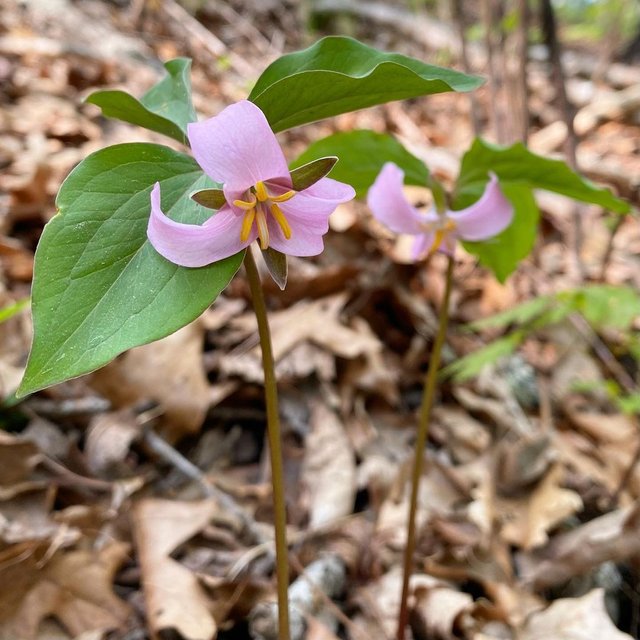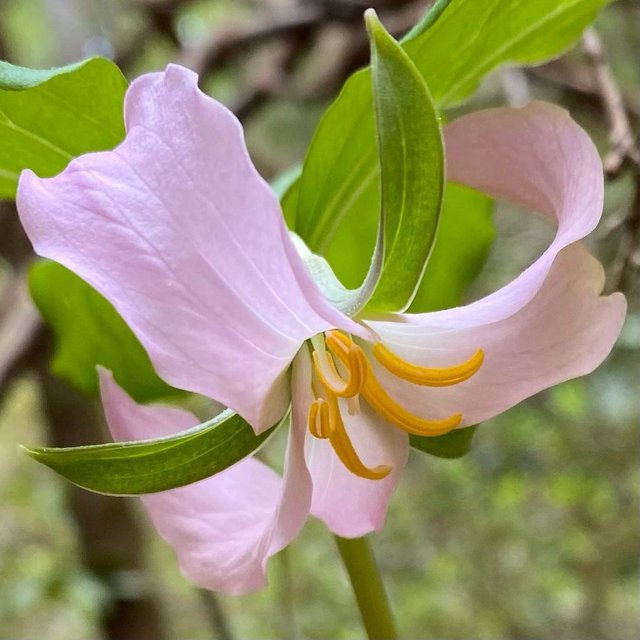
Bashful trillium (𝘛𝘳𝘪𝘭𝘭𝘪𝘶𝘮 𝘤𝘢𝘵𝘦𝘴𝘣𝘢𝘦𝘪 ). Like all Trilliums, a typical specimen of this species has three leaves atop a slender stem (botanically called a ‘scape’). A popular anecdote is that Trillium plants with fewer than three leaves are seedlings or juvenile, which will eventually mature to sport the characteristic trio of greens. But this is not always true.
Scientists studied how bashful trilliums are affected by deer grazing in the Smoky Mountains. Trillium leaves, which are tasty to deer, grow from an underground rhizome. If a plant loses all its leaves to a hungry deer, it won’t be able to make new leaves that year. Instead, the plant draws from energy stored in its rhizome to sustain itself and fuel new growth in the following spring. Deer damage isn’t too taxing for the plant if it happens only occasionally. Unfortunately, deer have become extremely numerous in parts of the Smokies, due to lack of natural predators. Turns out, repeated annual grazing can weaken even mature Trillium plants, so much so that they produce smaller growths with fewer leaves. In fact scientists found that where deer grazing is intense, some single-leaved Trillium plants can actually be upwards of a decade old! They know this by carefully excavating the rhizomes and counting the scars of past year’s growth, kind of like counting tree rings. Unlike tree rings, this natural record is less reliable for aging Trilliums much beyond a decade, because the oldest parts of the rhizomes will naturally decay over time. This means some of these plants may well be much older than a decade... What is clear though, is that baby plants and exhausted old plants are indistinguishable based on the number of leaves visible above ground.
